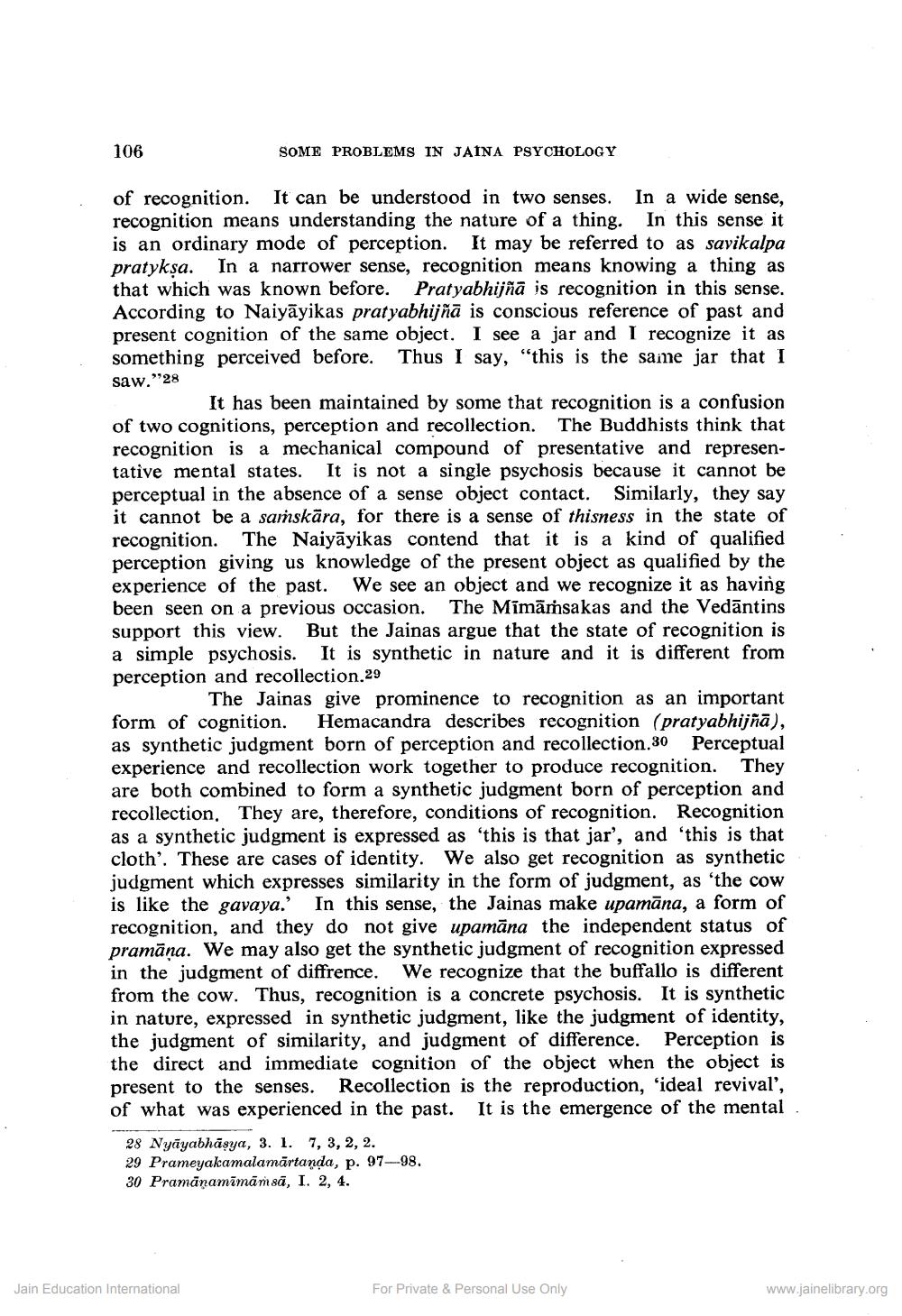________________
106
SOME PROBLEMS IN JAINA PSYCHOLOGY
of recognition. It can be understood in two senses. In a wide sense, recognition means understanding the nature of a thing. In this sense it is an ordinary mode of perception. It may be referred to as savikalpa pratyksa. In a narrower sense, recognition means knowing a thing as that which was known before. Pratyabhijñā is recognition in this sense. According to Naiyāyikas pratyabhijñā is conscious reference of past and present cognition of the same object. I see a jar and I recognize it as something perceived before. Thus I say, "this is the same jar that I saw."28
It has been maintained by some that recognition is a confusion of two cognitions, perception and recollection. The Buddhists think that recognition is a mechanical compound of presentative and representative mental states. It is not a single psychosis because it cannot be perceptual in the absence of a sense object contact. Similarly, they say it cannot be a sarskāra, for there is a sense of thisness in the state of recognition. The Naiyāyikas contend that it is a kind of qualified perception giving us knowledge of the present object as qualified by the experience of the past. We see an object and we recognize it as having been seen on a previous occasion. The Mīmārsakas and the Vedāntins support this view. But the Jainas argue that the state of recognition is a simple psychosis. It is synthetic in nature and it is different from perception and recollection.29
The Jainas give prominence to recognition as an important form of cognition. Hemacandra describes recognition (pratyabhijñā), as synthetic judgment born of perception and recollection.30 Perceptual experience and recollection work together to produce recognition. They are both combined to form a synthetic judgment born of perception and recollection. They are, therefore, conditions of recognition. Recognition as a synthetic judgment is expressed as 'this is that jar', and 'this is that cloth'. These are cases of identity. We also get recognition as synthetic judgment which expresses similarity in the form of judgment, as 'the cow is like the gavaya.' In this sense, the Jainas make upamāna, a form of recognition, and they do not give upamāna the independent status of pramāna. We may also get the synthetic judgment of recognition expressed in the judgment of diffrence. We recognize that the buffallo is different from the cow. Thus, recognition is a concrete psychosis. It is synthetic in nature, expressed in synthetic judgment, like the judgment of identity, the judgment of similarity, and judgment of difference. Perception is the direct and immediate cognition of the object when the object is present to the senses. Recollection is the reproduction, 'ideal revival', of what was experienced in the past. It is the emergence of the mental
28 Nyāyabhāsya, 3. l. 7, 3, 2, 2. 29 Prameyakamalamartanda, p. 97-98. 30 Pramānamāmām sā, I. 2, 4.
Jain Education International
For Private & Personal Use Only
www.jainelibrary.org




